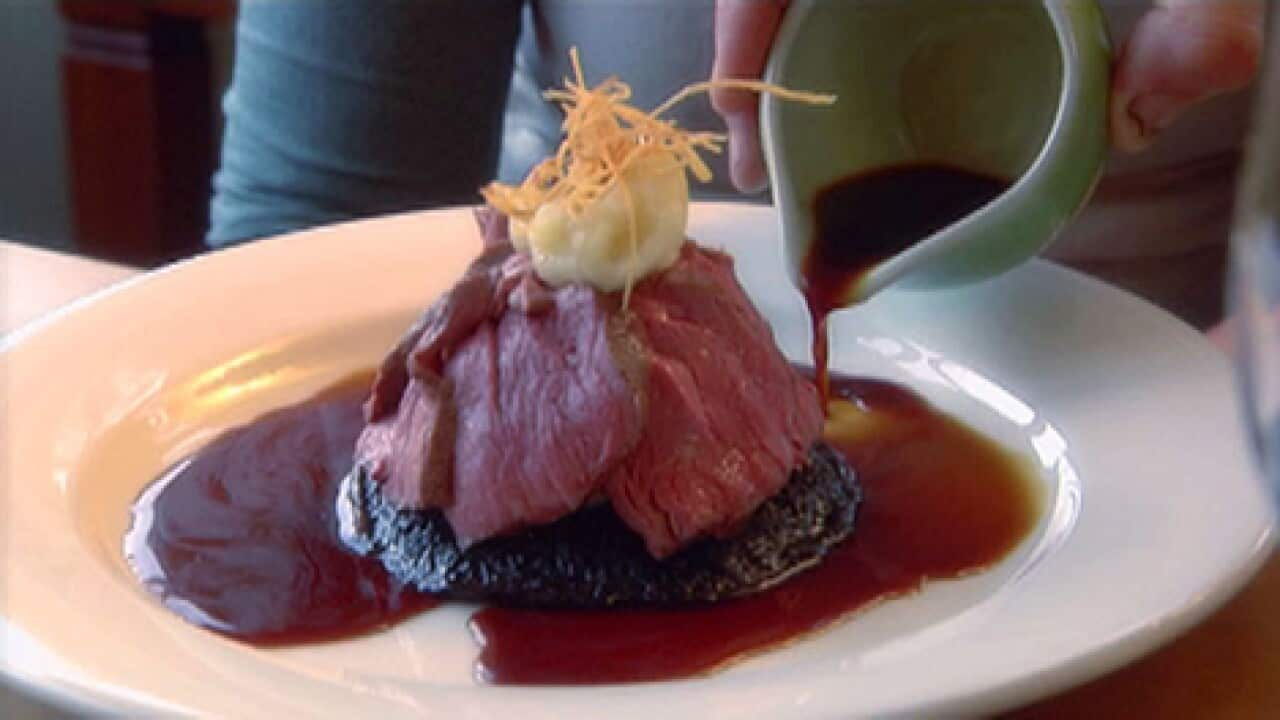A large platter sits on a table, brimming with neatly stacked sections of enoki mushrooms, shredded Chinese cabbage, chopped mizuna, pieces of carrot and chunks of leeks. Next to it, lies a plate of finely sliced meat wagyu beef. A ceramic pot of dashi broth warms on a portable stove. Around the table, diners wait eagerly with their chopsticks, ready to swoosh ingredients through the broth, and little bowls of condiments, ready for dipping.
This is what a table set-up looks like for shabu-shabu, a classic Japanese meal that blends the nourishment of a hot pot with the entertainment of fondue-style dining, where you, “Cook as you go, eat as you go,” says Justine Schofield, host of Justine’s Flavours of Fuji.
Hot pots have a long history in Japan, eaten over hearths in villages for hundreds of years. While the exact origin of the shabu-shabu style of hot pot is unknown, a restaurant serving it in Osaka is credited with giving it its onomatopoeic name in 1952, inspired by the sound the ingredients make as they’re waved through the broth to cook.
Shabu-shabu is one of three main hot pot-style dishes in Japan, along with sukiyaki and nabe. Nabe is more like the classic image of hot pot—meat, seafood, vegetables and tofu are cooked in a broth together. The broth varies depending on the region and ingredients, and might be dashi flavoured with miso, soy milk or kimchi.
Sukiyaki is richer than nabe or shabu-shabu—thin slices of beef or pork fried are fried oil then cooked with vegetables and tofu in sauce, mirin, sugar and sake, with a little dashi added at the end. It’s traditionally served with a beaten raw egg as a dipping sauce.
Shabu-shabu is a choose-your-own-adventure style of meal, where diners select the ingredients they want to eat, and set their own pace of eating. While the typical meat used is beef or pork, fish is also popular, particularly in coastal areas. When Justine pays a visit to the port city of Ito in Japan's Shizuoka prefecture in Episode 4 of Justine's Flavours of Fuji, she and local chef Motoshi-san cook up a shabu-shabu using thin slices of freshly caught local Alfonsino fish.
The ingredients are swirled with chopsticks, “just 4 or 5 times into the broth, until it’s cooked just through,” says Justine, then they're dipped into personal little bowls of dipping sauces—classically ponzu, a refreshing soy sauce and citrus-based sauce, and goma-dare, a creamy, highly addictive sesame sauce.
The cooked ingredients can be further customised with other condiments. Chef Motoshi-san adds a little momoji-oroshi, minced daikon mixed with chilli, and a squeeze of kabosu, a type of Japanese citrus (lime would work as a substitute).
As far as entertaining goes, the success of a cook-your-own meal was demonstrated by fondue fanaticism of the 1970s. Shabu-shabu is similar in this novel and interactive way of eating. But, different to fondue, it's a light and healthy meal, and which can be easily tailored to dietary requirements.
READ MORE

Butashabu salad
If you fall in love with the flavours of shabu-shabu in winter and want to try the summer version, cook "Butashabu" (or "reishabu")—a salad that combines pork cooked shabu-shabu style with a ponzu or sesame dressing.







